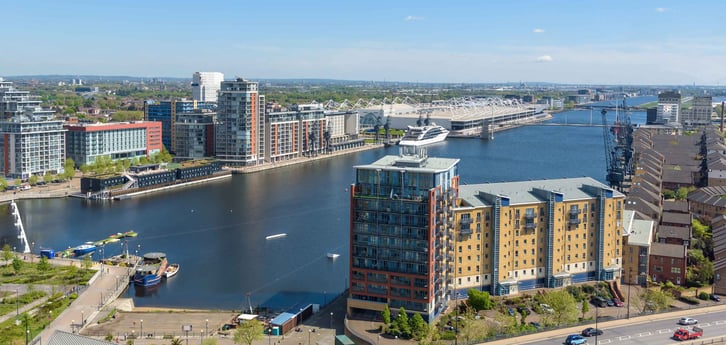Are we getting the most value from waterfront development?

Historically used predominantly to move people and goods, waterways have evolved in recent years to become arguably quite exclusive, being snapped up by development companies to build waterfront homes.
At base level, water has always been considered ‘valuable’ in development terms, with values increasing some 30% dependent on location. Value is less easy to understand in commercial property schemes but the likes of More London, Paddington and Canary Wharf have set new standards in their location and seem to carry a premium.
Interestingly the ‘quality’ of the water is a key factor with a 15% rise in value if the water itself is ‘improved’ – meaning existing property owners benefit if we clear up our rivers. Research has shown that canals have a lower impact on value than natural watercourses – beauty is in the eye of the beholder I say.
However, we need to offset this increase in value with the fact that developing near water can be a tricky and therefore expensive business. We have abnormal costs for structures and often difficult negotiations with those that manage the water. Risks cost money. And they are just the upfront costs. Long term there are high maintenance and stewardship costs for the water and any waterside structures including flood protection.
What if, in the past couple of decades, we’ve been thinking about water all wrong? After all, for most developments water is, frankly, decorative. Something nice to look at from your balcony, something that provides a nice backdrop in a marketing brochure or, just maybe, allows the odd boat dweller to moor up for short while.
This seems to me a missed opportunity and one borne out of a narrow definition of value that needs to change. Where our waterways used to be (relatively) democratic and accessible to all (or many), access is now often restricted. This all feels a little undemocratic and begs the question – “are we valuing water in the right way” – and if we change the way we think, would we actually achieve greater value?
What if, rather than focusing on the value of looking at the water, we thought of value from the perspective of looking from it? Should we be doing more to allow the many to enjoy our waterways, whether that be through activities on the water or opening up the public realm to all. Where many more can access our waterways, this in turn opens up greater potential value for commercial as well as residential uses – revitalising our waterways as valuable economic corridors.
For diversity and longevity of schemes, should we be encouraging greater community and leisure use in our waterfront property? Should we also be encouraging more access to land from the water, as was the case historically? Widen our horizons a bit further and we can see huge potential social value in changing the way we think about water, with health benefits (mental and physical) from access and exercise, green benefits though decreased congestion of the road, social benefits through inclusion and also economic benefits, benefitting the public and the private purse.
Now, if somehow we were to value these then maybe investment priorities would be a bit different, shifting the balance on development to be more positive, more socially inclusive….more ‘democratic’. Indeed, some research suggests higher value impacts are achieved where recreational and aesthetic amenity are combined – so it even makes pure financial sense to be more democratic.
Historically, water has always been central to our lives, let’s give a nod back to history and change the way we view our waterways.
